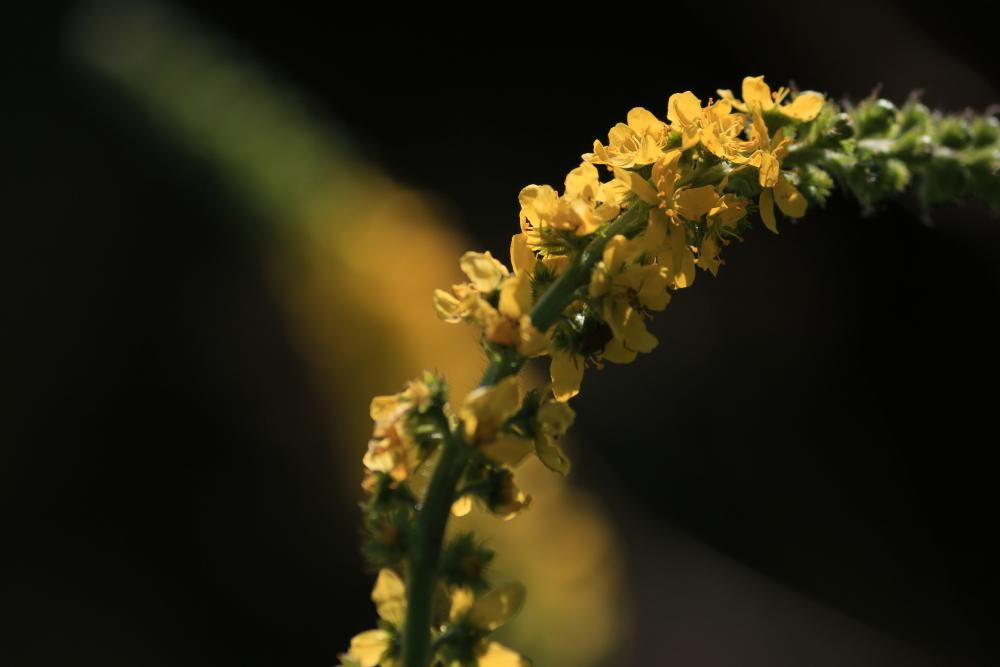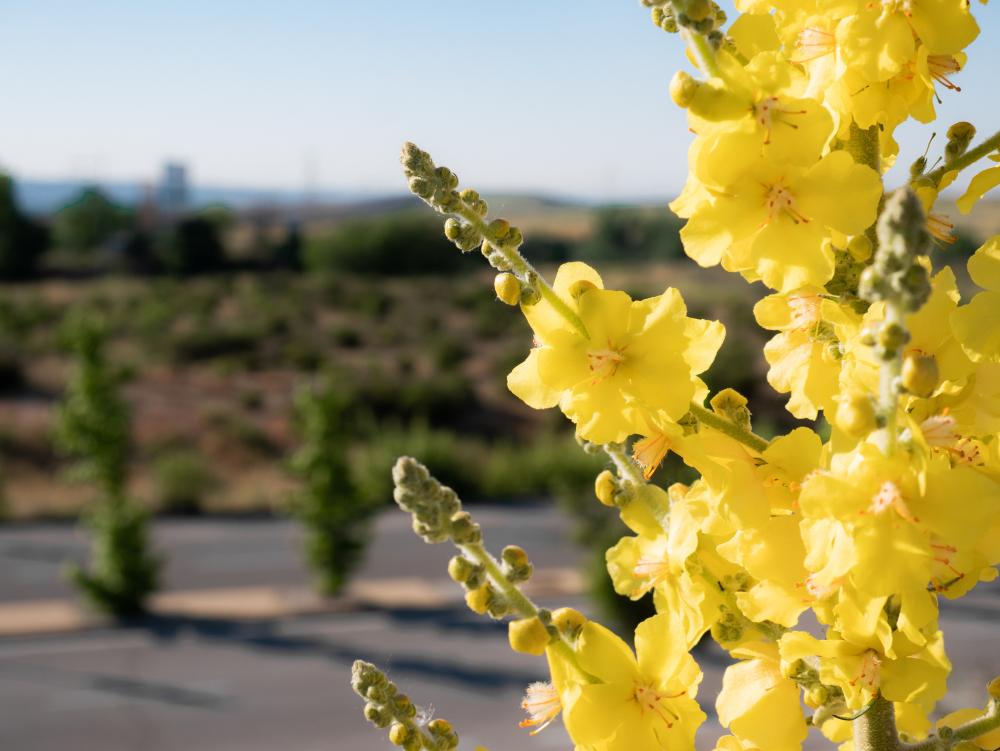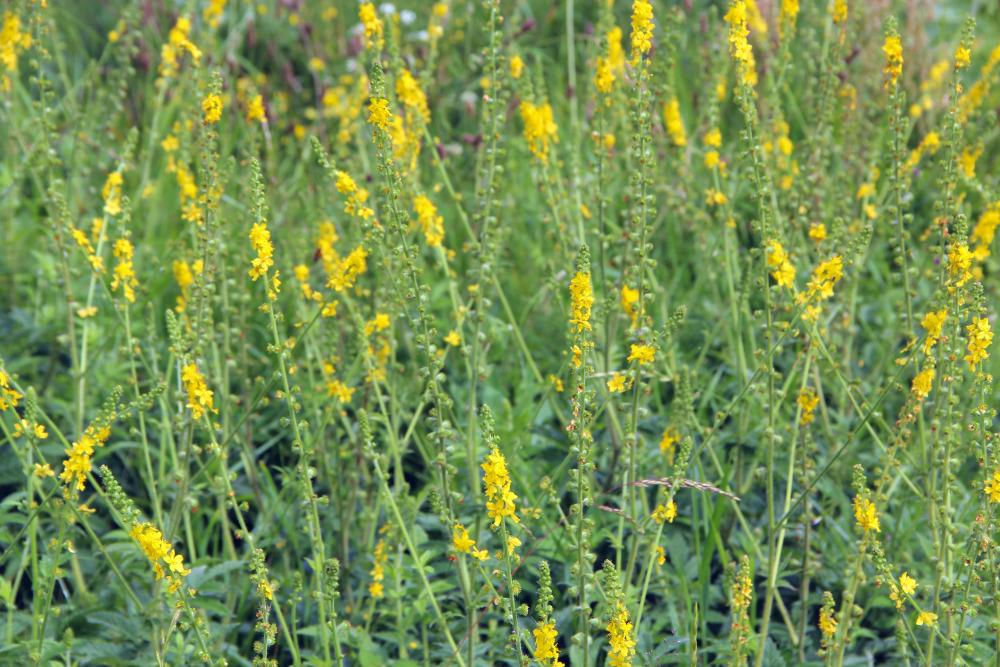Agrimony Herbs - How To Grow And Care For Burdock
Equally a medicinal herb, agrimony had a respectable place in different traditional medicines wherever it grew. Not that it's hard to grow either. The herb is famous for growing merely about anywhere there's soil and moisture. Information technology can tolerate different growing conditions that normal garden-variety plants cannot survive.

Although the herb is non equally popular equally it used to be, homeopathists rediscovered the healing properties of agrimony, and it'due south making a strong comeback. But you lot don't have to grow the herb for its medicinal qualities. It is an ornamental plant in its own right, and its low maintenance makes it an ideal add-on to your garden. Read more to find out how to grow and care for agrimony.
All Well-nigh Agrimony
Agrimony (Agrimonia eupatoria) has many names as befits a plant that was once growing practically in every other home. Some people called information technology king's herb, burdock, or church steeples. At ane time, it was considered the cure-all for many ailments from indigestion to respiratory diseases.
A member of the rose family unit, the hardy herb is planted from the early spring all the way to early fall. This might explicate why the found, which is native to Europe, has spread beyond the northern hemisphere, and only the icy arctic has proven likewise inhospitable for information technology.
The hardy perennial grows to well-nigh 4 anxiety alpine, although in the garden, it might not exceed three feet tall. It has strong rhizomes from which the stems grow. The leaves are long and narrow and usually dark light-green. The leaves tin can attain 8 inches long. Usually, the base leaves are larger than the ones at the summit.
Between June and September, minor bright yellow flowers open and stay in bloom until they get pollinated.
Although there are over 15 agrimony species in the wild, but one variety has fragrant flowers. It grows in Deutschland and is known as Agrimonia procera. Later pollination, small hooked fruits develop, and they comprise the seeds of the plant. When wild animals eat the fruits, they spread the seeds in new pastures where they germinate quickly and start new plants.
Agrimony Uses

Although information technology mainly serves as an ornamental plant, agrimony was once famous for being able to treat all types of diseases. People simply took the dried leaves and potions made of the herb's roots as a cocky-prescribed medicine for everything from the common common cold to abdominal worms and gout. Hither are some of those common uses of agrimony in the olden likewise as modern times.
- The young leaves of the herb accept a slightly less acrimonious sense of taste than the well-developed leaves. You lot can add them to soups and stews to give them a refreshing gustation. Don't use likewise much, though since the aroma can be overpowering.
- To this twenty-four hour period, folk medicine celebrates agrimony and treats it similar royalty. Information technology goes into many concoctions, and the roots have a special value despite, or perhaps because of, their very unappealing taste.
- In ancient Greece, agrimony was the king of medicinal herbs. It was used in different types of therapy, including in potions, and sometimes the leaves were rubbed against wounds to heal faster.
- In the middle ages, the herb was prescribed to treat liver issues and keep the vital organs salubrious.
- In apothecaries, patients had access to the herb in different forms. It was either boiled in vino to make a potion or soaked in water to make soup. Sometimes, the dry out leaves and roots were added as a pulverisation to lard, and the ointment was applied to wounds and bruises.
- Whenever dysentery swept through Europe like wildfire, agrimony was the only line of defence force that people had against the illness. Its effects are in question, though, and there's no credible report that it healed anyone or prevented the disease.
How to Grow Agrimony
Ornamental or medicinal, agrimony serves many purposes. And although it'south non recommended to use the flowers of the plant for pain relief or treat diarrhea, you're more than than welcome to grow it in the garden to brighten the place and concenter pollinators. An like shooting fish in a barrel and guaranteed way to grow the herb is to start it from seeds. Hither'due south how to do that in easy steps.
- Considering it has a long growing flavor, you demand to give the herb a headstart in tardily wintertime.
- Make full a ziplock bag with general-purpose potting mix and h2o it to make it moist. Identify 5 to 8 seeds in the bag and keep it in the fridge for 8 weeks. Don't let the potting mix go dry out until the seeds germinate.
- Once the seeds germinate, take them out of the purse and ready a container for them.
- Fill a shallow tray with regular soil and place two seeds in every cell. Cover the seeds with a thin layer of soil. So water it to go information technology moist.
- Thin out the seedlings as they abound. Remove any crooked or unhealthy seedlings.
- Have the tray outdoors gradually and proceed information technology in a sunny spot for the next 4 weeks. At dark bring it back indoors until the weather warms upwardly.
- About four weeks later the last frost and when the air temperature rises above 55 degrees F. you can transplant the seedlings to the garden.
- Choose a spot in your garden that gets 6 hours of dominicus during the growing season. Don't plant the herb in the shadow of a tree or a building, every bit it doesn't thrive in partial shade.
- Turn up the top 12 inches of the soil and mix in a good amount of organic materials to improve drainage.
- Dig a hole for each bulb as deep equally the root ball of the plant and slightly wider.
- Ease the bulb into the hole then that the soil line aligns with the edge of the hole. Fill back with soil and firm it.
- Space the seedlings between 12 to fifteen inches apart. While agrimony grows to about 4 feet loftier, it spreads about one pes across, so spacing the plants is important.
Agrimony Intendance

Once the complicated procedure of starting agrimony from seeds is over, you can sit back, put your feet up and sip on a common cold ane as you lot sentinel your herb grow. Granted, agrimony tends to take its time to grow which is why you start it early on indoors, merely once it blooms, the combination of bright yellow flowers and bright green leaves are a sight for sore optics.
As a low-maintenance herb, y'all won't take to hover over it and keep your hands decorated with this perennial. For the most part, you'll simply accept to water information technology regularly, feed it, and fend off the usual pests and diseases.
Soil
After germinating the seeds in the fridge, moving them to a pot or a tray to terminate their sprouting, you're ready to transplant the herb in the garden. Agrimony doesn't do well as a houseplant considering of its pinnacle and its demand for sunlight. The soil can exist either loamy or sandy. Heavy soil retains the water longer than the herb likes, and it hinders root evolution. Meliorate the dirt soil with coarse sand and add lime to make the soil slightly acidic. You demand to bring the soil pH as close to 6.0 or six.5 as possible. The sand will also improve drainage and loosen the texture of the soil.
Water
The watering patterns and requirements of agrimony are not unlike from other plants y'all grow in the garden. Ane inch of water a week is all the perennial herb. Provide that amount through two or three irrigations every week, depending on how hot the atmospheric condition is. Water early in the morning before the lord's day heats upwardly and the soil dries up too fast. Aim the water nozzle low toward the base of the plant, and don't sprinkle water on the foliage to avoid fungal infections. Keep in mind that that'southward the water quota for the growing season in the spring and summer. Cut back on watering during the fall and cut information technology further during the common cold winter months.
Fertilizer
Apart from the organic materials you mix into the soil before transplanting the agrimony seedlings, yous won't accept to fertilize the herb much. This perennial is non a heavy feeder, and thanks to its tiresome growth rate, it can survive in soil with little nutrients. Even so, since this is an ornamental plant, you'd want the leafage to be lush green and the flowers bright yellow and abundant. To speed upwardly the growth of the herb, you can feed it with nitrogen-high fertilizer once the roots found. This volition trigger robust leafage growth. In the tardily spring and before the blossom buds sally, switch to a phosphorus-loftier fertilizer to promote larger and brighter blooms. Don't fertilize the herb after the final blossom to prepare it for the winter.
Companion Plants
Equally a herbaceous perennial, agrimony does well aslope other perennials. Considering of its tiptop, it should be in the background allowing other smaller perennials to get plenty sunlight. Some suitable companion plants that grow nicely with agrimony include lavender, sage, oregano, chives, lovage, thyme, and rosemary.
Agrimony inappreciably repels any pests, and it doesn't misfile whatsoever wildlife, then it offers no benefit to the other plants. So growing it alongside vegetables can be counterproductive and has no advantage to the vegetables.
Pests and Diseases
We said that agrimony doesn't repel pests, but it also doesn't concenter them. Apart from aphids and calibration, few other pests pose a serious risk to this herb. You can easily get rid of the tiny pests using neem oil spray or rubbing the burdock leaves and stems with a swab soaked in rubbing alcohol. The only bug that tin can cause damage to the plant is the blossom midge. It feeds on the petals of the flowers and ruins the blooms completely. The larvae as well grade galls on the stems, which further harm the ornamental plant. Remove infected flowers and stems to foreclose the spread of these pests.
Equally for diseases, it's a different matter. The master issues you might take with the perennial include root rot and powdery mildew. Both are caused by overwatering the institute. Poor ventilation and high humidity can also accelerate the spread of powdery mildew. Brand sure air circulation is practiced effectually the herb and allow the tiptop two inches of soil to dry out between irrigations.
Harvesting Agrimony
Flowers are not the only part of agrimony that you can harvest. The leaves too have many uses, and you tin make tea, ointments, and infusions with them. Allow the flowers to open up up in the late spring or early on summer and start harvesting them by late June or early July. Pick the leaves at the meridian of the stems as they're young and don't have a strong acrimonious taste.
You can also keep the blooms in a vase where they volition stay fresh for weeks at a fourth dimension.
Source: https://www.diys.com/agrimony-herbs-grow/
0 Response to "Agrimony Herbs - How To Grow And Care For Burdock"
Post a Comment